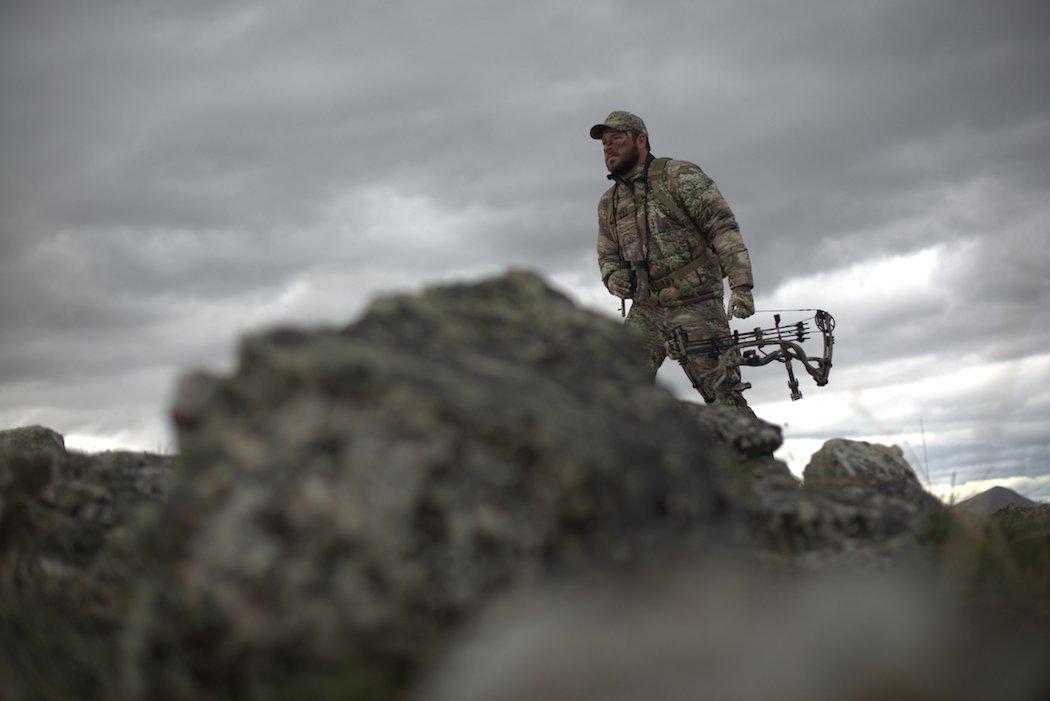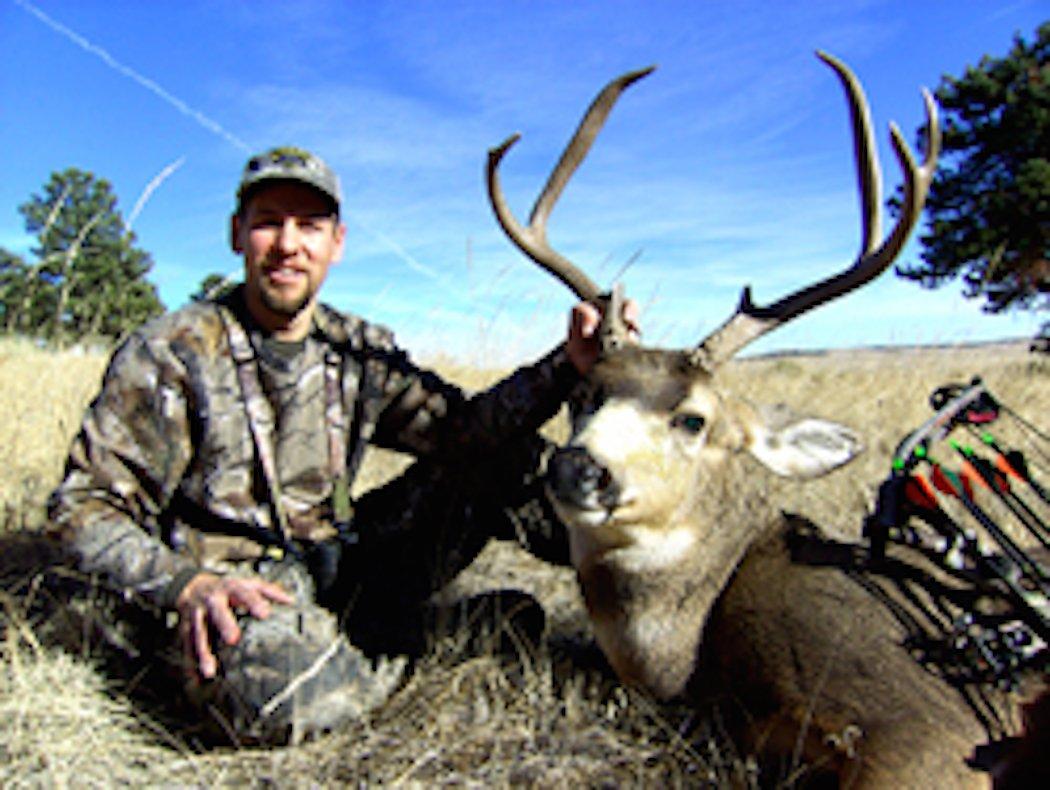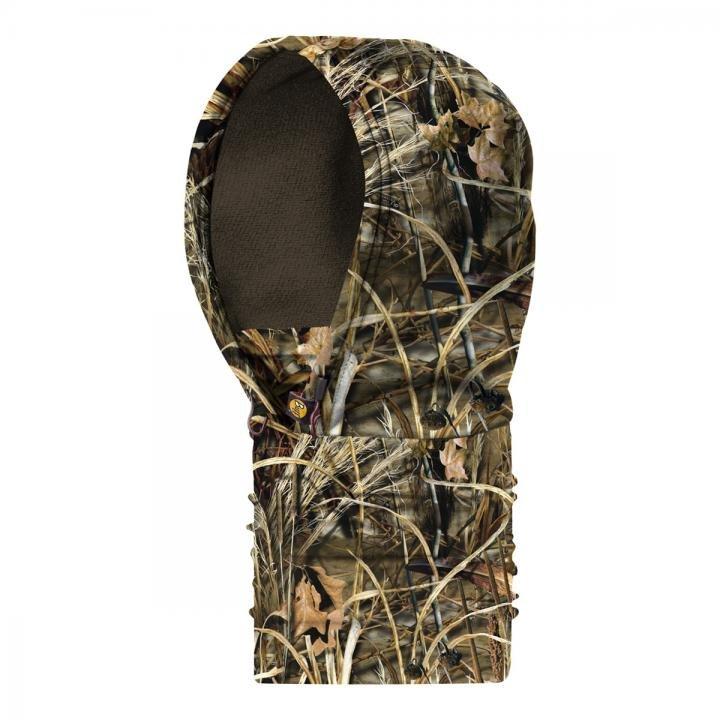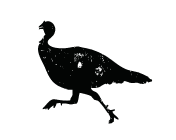Do You Prefer the Spot-and-Stalk Method?

I'll never forget the day I hunted mule deer with Tom Tietz, an outfitter based in eastern Colorado, which was about 10 years ago today. As we drove the two-track roads in his battered pickup leading out across the expansive rolling ranchland, I was beginning to wonder how on earth we were going to close in on game in this stark, parched wasteland.
Where do they sleep? I asked, comically, as the early morning sun barely pierced the horizon.
They rest in more places than you think, he said. You'll see — they are masters at hugging topography, and each swell in the terrain is utilized to their advantage. It's not easy, but they can be stalked. It comes down to how bad you want to make a kill.
It wasn't long before we put our glasses on a wall-hanger buck with more than 200 inches of gnarly antler. He was running with a harem of does. This buck's rack flared out to an honest 30 inches and were decked out with stickers galore. I was already feeling the effects of adrenaline and I hadn't even stepped out from the truck.
Usually one would take the time to analyze the terrain and plot out an ambush. But as soon as we drove behind a hill, and I got out to grab my gear, my ready-to-go guide was already halfway up the vantage point, racing along in stalk mode.
I caught Tom at the top as he stopped to glass the buck. We could clearly see the herd of deer, about a mile away, grazing across an open flat. The terrain was layered with nothing more than scraggly, yellow prairie grass and sporadic yucca plants.
Get in that cut and use the yuccas for cover, Tom excitingly muttered as the cold wind whipped across our faces. And stay low! Always obedient to a guide's request, I did what he said, but I had my doubts.
About an hour later, with a chaffed belly and cactus tines all over my hands, arms and knees, I found myself 85 yards from the regal buck and 12 sets of doe eyes. How I had made it this far was beyond me, but somehow by filing in behind each yucca, and with the help of Realtree camouflage that blurred my image into the grass, my outline was distorted enough to fool a herd of mule deer eyes. Surreal it was.
Unfortunately, I was at the last yucca plant that made up the space between the deer and me. All I could do now was wait and hope that these bedded deer would get up and stroll within range at some point during the day.
Two hours later, the buck was up and nosing his companions, evidence that the rut was in full swing. I moved to my knees so I could draw my bow if needed and made a cardinal mistake. One of the does pegged me solid, and it didn't take long for the gagger buck to walk out of my life, forever. To this day he is the largest mule deer I've ever encountered on the hoof. Perhaps if I had utilized a little more patience and stalking skill, I could've had a solid crack at that buck. And then I'd be staring at him on my wall instead of boiling with resentment for my error.
What happened? asked Tom, as he walked up on me looking mildly depressed. Too far, I said. I was hoping he'd push them past a little closer.
Tom urged me to take a practice shot, just for kicks, right where the deer had been standing. I picked out a patch of grass, drew my bow and took careful aim. The range was a bit of a stretch, but when my arrow pierced the spot, I realized another costly mistake: I hesitated too long, and I should have taken the shot.
This brings me to some good points. To stalk well in western, open country, you must go afield equipped with several abilities:

- The knack to read terrain and identify the smallest forms of stalking cover.
- The aptitude and diligence to keep your human outline low at all times, almost always stalking from your knees or belly.
- The ability to shoot well and know your effective range precisely.
- The power of a positive attitude, which keeps you from feeling discouraged and lazy as you face the impossible. As with me that day, any chink in your armor could cost you success.
Plot Your Course
My guide reacted quickly that day on the Colorado prairie. It wasn't that he didn't take careful assessment of how we'd stalk that buck. He just did it much faster than I, obviously due to much more experience in stalking such country. The more you hunt open terrain, the quicker you'll be able to size up a good stalking situation and figure out the best approach.
Start by closely evaluating the animal's whereabouts and the ripples in the terrain. Any type of swell in the topography, as well as the smallest forms of ground cover, will assist you in stalking. Also, always take the safest route, which is usually the longest way around. Rarely can you take a direct approach at an animal. Most of the time you'll have to swing around in a U-like fashion to use the terrain to your advantage, and to get the wind right (always carry a wind checker).
Don't Miss: 5 Tips for Stalking Mule Deer
There are many advantages to stalking animals in country devoid of cover. The greatest advantage is your ability to see other animals in your path that could foil the stalk, and to watch the animal you're stalking from time to time to make sure you're stalking in the right direction, and that your prey is staying put. If not, you'll have to improvise as you go.
Polish Your Stalking Skill
Don't learn how to stalk out in the wild — learn at home around the yard. Even as a seasoned stalk hunter, I routinely suit up prior to a hunt, just to brush up on my stalking skills. Months of non-hunting time can go by from one hunt to the next, and you'll forget a lot of small, important techniques for how to move your body. It's even better to grab your bow, get your camo on and shoot some targets as you crawl from one place to the next, mimicking the real thing.
There are two ways to maintain a low profile while stalking — to move on your knees and to crawl on your belly.
To stalk on your knees, it's best to wear kneepads. I move by taking one kneecap step at a time, while supporting myself with my right hand. My left arm usually curls my bow, keeping it tucked away safe.
Most of the time, however, I find the belly crawl most useful and effective, particularly when there's nothing more than ankle-high grass and a few patches of sage or spread-out yuccas. To move, use your knees and elbows to advance forward. Sort of cup each leg into a wing-like shape, and push rearward with each knee, one at a time. Each stride will move you about 18 inches. Use your elbows in unison. It works effectively.
When crawling, I like to slide my bow out in front with one hand, usually my left, or hold it in this hand and use my elbow for support, keeping the bow just above the ground as I advance forward. To eliminate noise on rocks, you should pad one side of your bow to dampen sound. You can use fleece or black Duck tape to do this. I learned this tip from Randy Ulmer.
One last point: Don't forget a pair of thick leather gloves. These come in handy for those little cacti you usually can't see beneath the sand and mud.
Watch Your Shadow
In sunlight, your body's shadow is your worst enemy. If you fail to disguise it from the eyes of your opponent, you'll quickly get busted. Obviously, if you're in open cover and it's sunny, you'll have some shadow that will be impossible to hide. Fortunately, by belly crawling you'll rid yourself of most of it. Just keep a watchful eye on your body's silhouette, and make sure it's doesn't blow your cover.
Buff Realtree Windproof Hoodie

Improve Your Shooting Capability
To be lethal in bowhunting wide-opens spaces, know how to draw your bow without being detected and have the capability to shoot extended ranges - because rarely do you get a close shot out here.
Like the mistake I made that day with the Colorado monster buck, if you try to pop up with your torso so you can draw the bow, you'll blow any shot opportunity 90 percent of the time. Consider it mandatory to draw while lying flat to the ground - yes, flat to the ground.
Stickbow and compound fingers shooters have perfected this technique for years, but it seems to skip most modern compound shooters who use a release aid. Perhaps the reason is due to poor arrow-rest designs of the past. However, today's shoot-through and drop-away rests offer full-containment of the arrow, a great feature that allows one to draw the bow parallel to the ground - a huge plus. Good examples of arrow rests with this feature include the Quality Archery Designs Ultra Rest, Ripcord, Whisker Biscuit, and others.
Effective shooting distance is a controversial topic, but if you can't shoot out to 50 yards accurately with broadhead-tipped arrows, you're handicapping yourself immensely on open-country game. With good shooting form, a lot of pre-season shooting practice, quality modern equipment, precise tuning, and an arrow/broadhead combination that bucks the wind, long-range shots can be doable and ethical.
Also, be sure to set up your bow tough. Don't deck it out with a bunch of flimsy 3D range accessories. I use nothing but the stoutest bowsights and arrow rests available on my bows, ones that use large lock-down screws and don't exhibit any play when wiggled from side to side using a strong hand. I like to practice and go afield with multiple aiming pins on my bowsight, as well. This way, I'm fully confident and ready to make a precise 50- or 60-yard shot when conditions are right.
A bow-mounted quiver is probably most handy while stalking open country. However, a well-designed hip quiver or back quiver works nearly as well. The key is to learn how to use it. I use a hip quiver and sometimes crawl on my side to prevent the fletching from rising above my back. However, in most situations, where I have to belly crawl a lot, I fasten the quiver to my back, in a place where I can draw out an arrow with ease.
After stalk-hunting deer for more than a decade in the most expansive, most barren-like country known to man, I now know a few tricks of the trade. By using the techniques mentioned in this article, I believe few open-country stalks are impossible. Simply put, when you go afield with great stalking skill, confidence in your equipment and shooting ability, and with the attitude that insists on succeeding, you can definitely bow-kill animals in the most wide-open country.
Don't Miss: 18 Tips for Stalking Deer with a Bow
Editor's Note: This was originally published on November 20, 2008.
Are you a deer hunter thirsty for knowledge? Check out our stories, videos and hard-hitting how-to's on deer hunting.













































